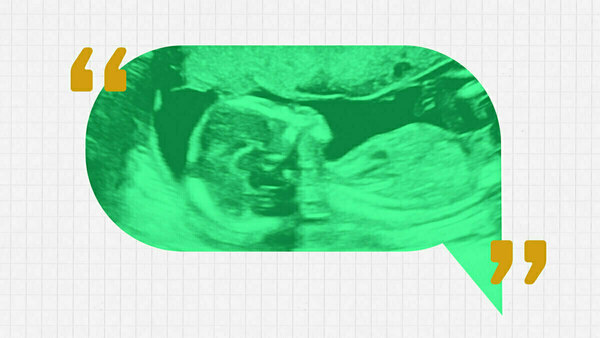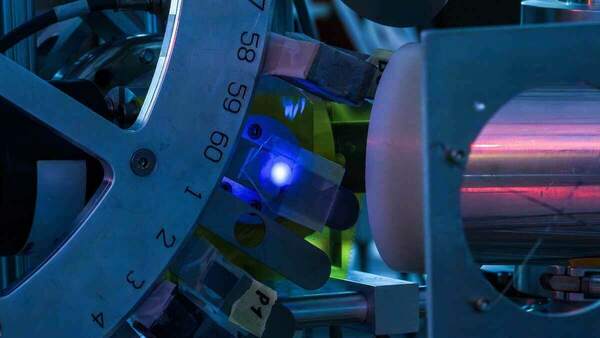Smarter tools for policymakers: Notre Dame researchers target urban carbon emissions, building by building
Carbon emissions continue to increase at record levels, fueling climate instability and worsening air quality conditions for billions in cities worldwide. Yet despite global commitments to carbon neutrality, urban policymakers still struggle to implement effective mitigation strategies at the city scale.
Now, researchers at Notre Dame’s School of Architecture, the College of Engineering and the Lucy Family Institute for Data & Society are working to reduce carbon emissions through advanced simulations and a novel artificial intelligence-driven tool, EcoSphere.
“Our goal is to develop tools that assess the carbon emission reduction and mitigation potentials of the built environment infrastructure —both through renovation and improved new construction. At the city scale, such a tool can offer data on building components and lifespans to support decision-making by policymakers and city planners,” said Ming Hu, the associate dean for research, scholarship and creative work in Notre Dame’s School of Architecture.
Hu studies how embodied carbon can be analyzed to develop greener cities. Often considered a blind spot in urban sustainability due to limited standardized data, embodied carbon includes the carbon dioxide emitted during the construction of buildings. It accounts for almost 40 percent of energy-related CO₂ emissions.
Drawing from the life cycle assessments and renovation rates of more than 1 million buildings in Chicago, Hu worked with Siavash Ghorbany, a Notre Dame doctoral student in civil and environmental engineering, to develop a simulation of real-world urban dynamics. The model and the tool both help identify future mitigation strategies for reducing carbon emissions.
Hu and Ghorbany employed a “bottom-up” approach to tackling the project, calculating urban emissions by aggregating detailed data from individual buildings, including materials, age and structural characteristics.
The findings, published in the March 2025 edition of npj Urban Sustainability, generated over 350,000 simulated scenarios and revealed that strategies focused on renovation and extending building life can significantly reduce embodied carbon emissions. The results showed that new construction produces up to 7,500 times more CO₂.
Renovation, Hu suggested, is often a more sustainable option. “While new construction introduces greater uncertainty in emission outcomes, our findings show that strategic building updates — whether through renovation or carefully planned new development — can significantly mitigate these risks. However, an increase in building size can offset potential carbon savings, underscoring the importance of urban planning approaches that prioritize renovation, preservation and efficiency where possible.”
For city planners and local policymakers, having access to this data in a user-friendly way may generate more effective advocacy for policies that can work to slow the rate of carbon emissions in cities.
Notre Dame researchers Matthew Sisk, codirector of the Civic-Geospatial Analysis and Learning Lab and associate professor of the practice in the Lucy Family Institute for Data & Society, Chaoli Wang, professor of computer science and engineering and Siyuan Yao, postdoctoral candidate in computer science and engineering, teamed up with Hu and Ghorbany to transform the scenario-based simulations into an AI-powered platform called EcoSphere, with results to be published in the August 2025 edition of Automation in Construction.

EcoSphere integrates national building datasets with embodied carbon data, Google Street View, satellite imagery and advanced machine learning techniques to generate readily available graphics that can help city planners and non-experts visualize emissions data. The EcoSphere interface provides information in a visualization dashboard, with the ability to dive deeper into simulation outcomes to understand potential cost implications, variables that drive simulation scenarios, the impact of mitigation strategies and cost and emission comparisons.
To evaluate the tool’s effectiveness, case studies were carried out in Chicago and Indianapolis. In both cities, EcoSphere demonstrated how varying construction methods and policy decisions can significantly impact a city’s carbon footprint and economic costs.
“EcoSphere uses machine learning not just to process these large datasets and imagery — but to understand it,” Sisk said. “By combining computer vision, geospatial analysis and large language models, we can generate detailed carbon profiles in real-time for entire cities, making sustainable urban planning faster, smarter and more accessible.”
Beyond city planning, EcoSphere has wider applications for use in school systems as a teaching tool for students to explore how carbon impacts the environment. Additionally, it can be integrated with smart city and digital twin platforms for real-time decision-making and monitoring. Governments can use it to forecast the long-term effects of policy choices and to craft more effective carbon reduction regulations.
Hu is hopeful that the tools will provide a positive impact for cities in the US, where robust, data-driven strategies can work toward neutralizing carbon emissions.
“Together, these studies show how detailed data and smart software can help empower city planners to make informed decisions for a greener future,” Hu said.
Contact: Carrie Gates, associate director of media relations, 574-631-4313, c.gates@nd.edu
Originally published by at news.nd.edu on July 14, 2025.
Latest Research
- Doctoral student Joryán Hernández to receive inaugural Sr. Dianna Ortiz, OSU Peacemaker AwardJoryán Hernández, a peace studies and theology doctoral student at the University of Notre Dame, was tapped as the first-ever recipient of the Sr. Dianna Ortiz, OSU Peacemaker Award from Pax…
- The Institute for Educational Initiatives at Notre Dame Launches Free Math App to Help Teachers Strengthen Students’ Understanding of Numbers and OperationsThe Number Sense Assessment app gives educators quick, research-based insights to target instruction and improve student outcomes Notre Dame, IN — Researchers at the Institute for Educational Initiatives at the University of Notre Dame have launched…
- U.S. Senator Todd Young on bridge-building in Congress and Notre Dame’s role in strengthening civil discourseThe University’s home state Senator discusses the importance of fostering common ground, on Capitol Hill and on campus
- Notre Dame researchers to shed light on the Brazilian Amazon, conflict resolution, microplastics, and moreNotre Dame Research (NDR) has selected five awardees of the Research and Scholarship Program – Regular Grant (RSP-RG) and five awardees of the Research…
- First impressions count: How babies are talked about during ultrasounds impacts parent perceptions, caregiving relationshipPsychologist Kaylin Hill studied the impact of a parent’s first impression of their baby during an ultrasound exam. The words used by the medical professional to describe the baby (positive or negative) influence how the parents perceive their baby, relate to them after they're born and even how that child behaves as a toddler. The research has broad implications for how we train medical professionals to interact with expectant parents, as well as how we care for parents during the perinatal period when they are most susceptible to depression.
- Researchers at Notre Dame detect ‘forever chemicals’ in reusable feminine hygiene productsWhen a reporter with the Sierra Club magazine asked Graham Peaslee, a physicist at the University of Notre Dame, to test several different samples of unused menstrual underwear for per- and polyfluoroalkyl substances (PFAS) in 2019, the results fueled concern over chemical exposure in feminine hygiene products — which ultimately ended up in a $5 million lawsuit against the period and incontinence underwear brand Thinx. Then in 2023, the New York Times asked Peaslee to test 44 additional period and incontinence products for PFAS, a class of toxic fluorinated compounds inherently repellent to oil, water, soil and stains, and known as “forever chemicals” for their exceptionally strong chemical and thermal stability. Measurable PFAS were found in some layers of many of the products tested — some low enough to suggest the chemicals may have transferred off packaging materials, while others contained higher concentrations, suggesting the chemicals were intentionally used during the manufacturing process. In the meantime, another group of researchers published a study that found PFAS in single-use period products, leading Peaslee and his lab to widen their investigation into all sorts of reusable feminine hygiene products — often viewed as an eco-friendly option by consumers. Now, the results of that study have been published in Environmental Science & Technology Letters.













